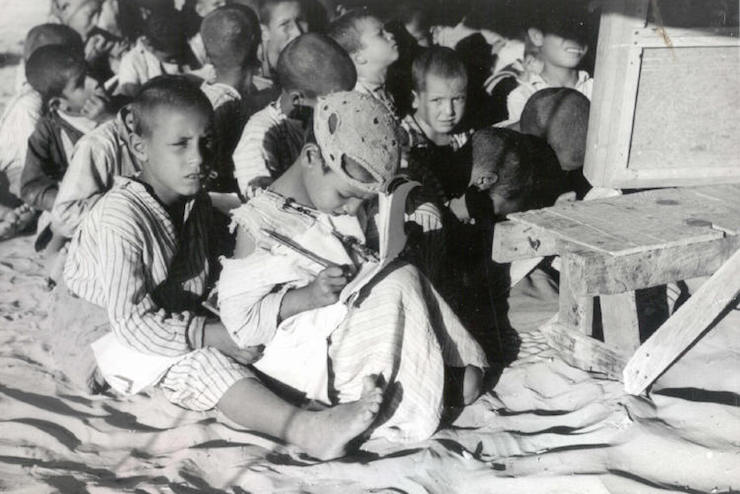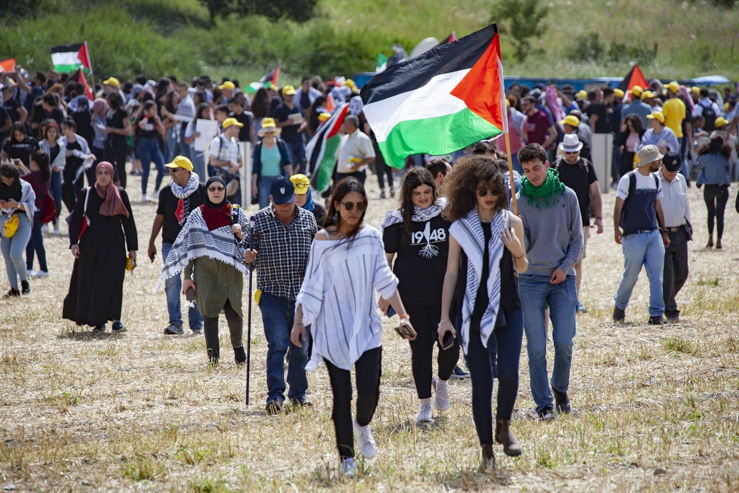Israelis tend to view the expulsions of the 1948 war as a small, local affair that was quite restrained compared to the Nazi genocide. For Palestinians, it is an ongoing dispossession.
By Sam Freed

To large portions of the Jewish Israeli public, the Nakba was small event — an historical side note. To most Palestinians, on the other hand, it is a huge, exceptionally brutal, and vastly important part of their history. In order to understand why there is such a vast disparity in the way the Nakba is perceived by Israelis and Palestinians, despite very little contention as to the objective size of the event — 700,000 people were deported and dispossessed, which today we would call ethnic cleansing — one must look back several hundred years.
Nothing motivates wars like ideas on paper. The printing press was invented in the mid 1400s in Germany. Rebellions against the Catholic Church were not infrequent during that period, but after the printing press was available such rebellions spread much faster. The most prominent of those was the Protestant Reformation, which led to centuries of internal religious and ideological wars in Europe, ending only in 1945. The number of victims is estimated at around 100 million.
Meanwhile in the Ottoman Empire the situation was quite different. Most of its military efforts were in the Balkans, directed towards Catholic Austria. In 1485, Sultan Bayzid II banned the printing press because the Arabic letters of the Qu’ran were considered too sacred to be used mechanically. The result was 500 years of relative peace in the Muslim world – quite a contrast to the constant bloodletting of religious wars in Europe.
The Ottomans controlled the Middle East by granting the local population maximal self-government. This included having a mukhtar (chief) run each village according to its own traditions. The result was that the Ottomans were able to control the entire area between the Mediterranean Sea and the Jordan River with only a few hundred soldiers. While in Europe tens of millions were being killed in Christian-on-Christian violence, the first wars amongst Muslims involving over one million deaths happened quite recently: the Bangladesh Liberation War in 1970 and the Iran-Iraq War in 1979.
The Zionist leadership that created Israel was virtually entirely of European origin. In the first half of the 20th century, the numbers of deportees and the dispossessed in Europe was high: in 1923 there were massive “population exchanges” between Greece and Turkey, in 1947 the British arranged for the partition of India, and after the Second World War eastern and central-European states expelled eight million ethnic and cultural Germans who lived in those countries for centuries. As a culturally European society, it is unsurprising that the Israelis did not see the expulsion of 700,000 people as exceptional or even uncivilized.
On the other hand, prior to the Nakba — the worst disaster in the collective memory of Palestinians — was the punitive exile of 10,000 men to Egypt in 1834. This was occasioned by the Palestinians refusing to join the Egyptian Army during the Egyptian revolt against the Ottomans. In contrast to the the European vantage point, the expulsion and dispossession of 700,000 people, including women, the elderly, and children, was seen as an act of barbarism of unprecedented magnitude. The disaster of 1948 was 70-times larger than the largest calamity in local popular memory at the time.
Additionally, Israelis and Palestinians view the Nakba differently when it comes to the dimension of time. As far as Israel is concerned the expulsions were over by the end of the war and cemented with the refusal to return refugees after the war. For the Palestinians, the Nakba is ongoing. The presence of the refugee camps is an ongoing tragedy, as is every time a Palestinian is dispossessed of land or a settlement for Jews only is set up on previously Palestinian land.

This ongoing Nakba peaked in during the war of 1967 but has continued in waves since 1948 through the expropriation of land in the Galilee and in the Negev, the ongoing tragedy of the “unrecognized villages,” and the ongoing construction of Jewish-only settlements in both the West Bank and Israel proper. For Palestinians, all these processes are the same Nakba: an ongoing dispossession and exile of Palestinians from their ancestral land.
For many Israelis, the Nakba was a small, local affair that was quite restrained in comparison to the mass murder of the Nazis in Europe. No matter what you call it, the Nakba is a founding event of the Israeli-Palestinian conflict. Seeking a mutual understanding of how the two sides see it so differently is a prerequisite for any rapprochement between the two nations.
Dr. Sam Freed is a researcher at the University of Sussex, and teaches at the Hebrew University. He is also an occasional human rights activist. This article was first published in Hebrew on Local Call. Read it here.
